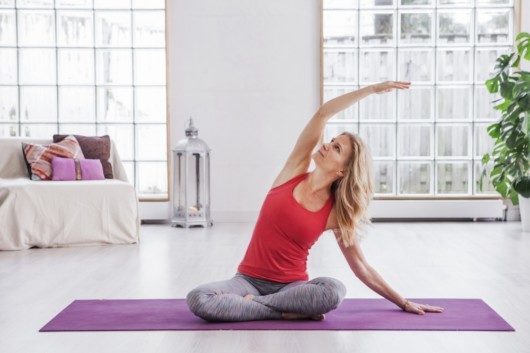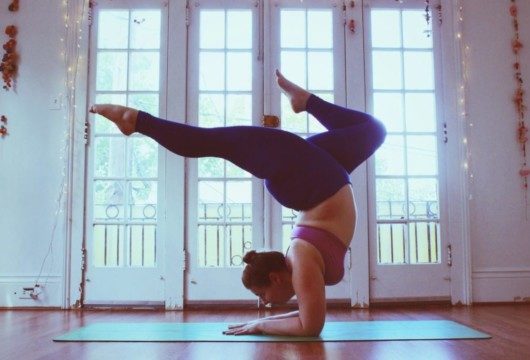Practicing yoga is beneficial for students because it helps improve productivity, creativity, and writing skills. Recommended poses help beginners start practising yoga.
Yoga is an easy way to stay in shape and balanced during the day. It can help improve writing skills, learning productivity and patience. If you’re thinking to start practising yoga, but don’t know which poses are the best for the beginners, this guide is for you! We selected several poses to help you develop yoga skills and advance in yoga practices without the risk of injuries.
General Tips
Start from complicated poses is a bad idea as this adventure may end up with hospitalisation. As a beginner, you should follow these simple rules:
- Practice yoga regularly (ideally, every day)
- Start practising by trying to strike simple poses
- Limit the number of poses to 5-10
- Practice simple poses until you feel you do it very well
- Don’t give up if you can’t strike a pose from the first time
- Improve your yoga skills gradually without sharp surges
Let’s consider the poses that are perfect to start practising yoga. Pay attention to breathing rhythm and correctness of poses. Do 5-10 breaths when you take a posture (asana). You can choose from 300 asanas to shape the areas of your body you need.

-
Mountain
Although it seems simple, this pose helps tune your body for yoga and start to breathe the way you need for practices. For an external observer, you will look like you’re just standing when you strike this asana. However, you should control the following:
- Feet are together
- Spread your toes and press them down
- Lift kneecaps by contracting quadriceps
- Abdominals should be drawn in and up
- Keep shoulders down
- Keep chest is up
- Turn your palms inward
- Breathe deeply
This asana helps refresh your body and mind. You can even improve your writing skills to be able to apply for entry level creative writing jobs. This pose helps tone your abdominals in this way without much effort. You can even practice it in the workplace!
-
Downward Facing Dog
This pose is another well-known asana in yoga. We recommend doing it either before or after your yoga course. With the help of this pose, you can stretch the muscles of your back, neck, back surface of legs and hips. By stretching your muscles in this position, you can get ready for any other yoga pose. To take the pose of Downward Facing Dog you need:
- Start on all fours
- Wrists should be under shoulders
- Knees should be under hips
- Tuck under toes
- Lift hips up
- Press the palms to the floor firmly
- Tuck your stomach
If you can’t straighten your legs, keep the knees bent. Try to straighten your legs more and more each day you practice yoga. You can walk with your hands to find a comfortable position.
-
Plank
This asana is one of the most popular yoga practices. Many online instructors use this pose as the base for their courses. Plank helps balance the body in a challenging position using abdominals. It’s also important to control breathing. How to take this pose:
- Start on all fours
- Tuck under toes
- Lift legs up
- Make a straight line with your body
- Lower your shoulders down
- Engage your lower abdominals
- Breathe deeply
Plank helps strengthen your abdominals, release your inner energy, and improve your posture.
-
Child’s Pose
It’s easy to take this pose if compared to plank. This asana is used to have some rest after taking other positions in yoga. It helps stretch back, shoulders, chest, and hips. You can release tension in this way as well. To take this pose, you should do the following:
- Come on all fours
- Knees and feet should be together
- Sit the butt back to heels
- Stretch the arms forward
- Lower forehead
- Release all your body
- Stay in this position as long as you wish
This is an excellent pose for beginners to practice before going to bed or to reduce stress. Child’s pose is often used to rest after taking the pose of Downward Facing Dog.
-
Tree
This asana is perfect for beginners because it doesn’t require any special physical drill. You can take this pose at any place when you have a free minute. Tree asana helps get inner balance by reaching a standing balance. You can take this pose if you should focus on completing a task. To take this pose, you need:
- Put your feet together
- Place the right foot on the inner left thigh near the knee
- Put your hands together like when you’re praying
- Find an object in front of you to concentrate
- Keep abdominals engaged
- Relax your shoulders
- Hold a steady gaze
When taking the asanas, don’t forget to breathe deeply. Try to keep the balance not excessively leaning to the standing leg. Relax and control your breathing.
-
Triangle
You can stretch your body sides, strengthen your legs, and open up your lungs when taking this posture. This makes it one of the favourite asanas of all yogis. It’s not easy to understand how to do, but we will try to explain:
- Stand straight
- Move your legs apart
- Turn your right foot out 90 degrees
- You left foot is turned approximately 45 degrees
- Stretch your arms
- Hinge to the right leg
- Your right hand is on your ankle (shin, knee)
- Your left arm is up to the ceiling
- Look up to the ceiling and breathe normally

Ideally, your body should form a triangle. Your quadriceps and abdominals should be engaged when you take this position. Feel your muscles are stretching and blood is circulating across your body. This asana originated from this association. Imagine that you stuck between two walls and can’t move. Repeat this exercise on the opposite side.
You don’t need a bunch of yoga poses to improve your skills as a beginner. Make sure you’re doing these simple asanas correctly, and you will feel better. Gradually, you can try to take more advanced positions because your muscles will be ready for more intensive physical exercise. Don’t force yourself to become a yoga guru in a short time frame. Switch from one step to another at your own pace.



